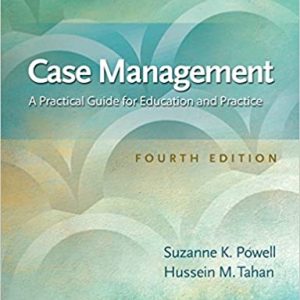Introduction to Managerial Accounting 7th International Editon by Peter Brewer GE
ISBN 9781259253126
New to the 7th edition
Faculty feedback helps us continue to improve Introduction to Managerial Accounting.
In response to reviewer suggestions we have implemented the following changes:
Overall:
? In Business boxes updated throughout.
All Chapters
? All chapters have additional Concept Check questions based on a review of the LearnSmart heat maps.
Prologue
? The prologue has a new section titled Managerial Accounting: Beyond the Numbers. It has expanded
coverage of leadership skills and an expanded set of exercises.
Chapter 1
? The learning objective pertaining to direct and indirect costs has been moved to the front of the chapter
to improve the students? ability to understand the material.
Chapter 2
? No significant changes except for two new In Business boxes.
Chapter 3
? No significant changes.
Chapter 4
? No significant changes except for one new In Business box.
Chapter 5
? The assumptions of CVP analysis have been moved from the end of the chapter to the beginning
of the chapter. The target profit analysis and break-even analysis learning objectives have been
reversed.
Chapter 6
? This chapter has added a new learning objective related to calculating companywide and segment
break-even points for companies with traceable fixed costs.
Chapter 7
? Added new text and an exhibit to help students better understand how and why a master budget
is created and how Microsoft Excel can be used to create a financial planning model that answers
?what-if? questions. Added two new end-of-chapter exercises that enable students to use Microsoft
Excel to answer ?what-if? questions.
Chapter 8
? In response to customer feedback, we reversed the headings in the flexible budget performance
report. The actual results are shown in the far-left column and the planning budget is shown in the
far-right column. Similarly, we reversed the headings in the general model for standard cost variance
analysis. The actual results (AQ ? AP) are shown in the far-left column and the flexible budget
(SQ ? SP) is shown in the far-right column.
Chapter 9
? No significant changes beyond adding a new Business Focus feature and two new In Business boxes.
Chapter 10
? A section illustrating the meaning of a constraint has been added. Also, several new In Business
boxes have been created.
Chapter 11
? Moved the learning objective pertaining to the payback period to the front of the chapter. Adopted a
Microsoft Excel-based approach for depicting net present value calculations. Added a discussion of
the behavioral implications of the simple rate of return method.
Chapter 12
? No significant changes except for new In Business boxes.
Chapter 13
? The learning objectives have all been redefined to emphasize an internal management perspective.
Four new ratios have been added to the text to further enrich the students? learning opportunities.











